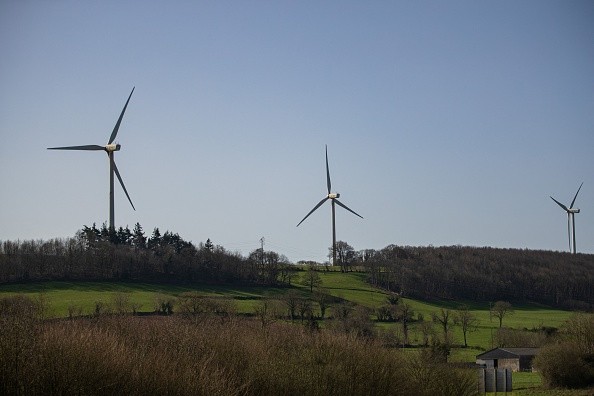According to a recent study performed by academics at North Carolina State University, offshore wind power might help cut wholesale electricity rates in six New England states on average, with a minimal chance of wind turbines collapsing during severe winter storms.
Strong Wind

Although very high wind speeds during winter storms may cause turbines to go offline briefly, they discovered that the greatest danger of unexpected wind power outages occurs in the summer when wind speeds are at their lowest. The findings, published in the journal Energy, might assist New England utilities, politicians, and customers figure out what to expect in terms of price and dependability from bringing offshore wind power to the region.
"Adding offshore wind to this market lowers wholesale energy prices and reliably lowers emissions," said Jordan Kern, an associate professor of forestry and environmental resources at NC State. "When we think about these bad winter storms, the cases where you lose wind power due to excessively high wind speeds are rare, and even when they happen, it doesn't break the system or cause a market shock." "A bigger issue we identified is what to do in the summertime when scorching and wind speeds are low."
"Land-based wind power accounts for most wind power in the United States," Kern added. "Many of it is in the middle of the nation, but if you live on the East Coast, the land is costly, and wind speeds are lower, so offshore starts to appear attractive."
Also Read : Experts are Saying that Renewable Sources are Not Enough to Solve Europe's Energy Crisis
Cold Spell
During an unusual cold spell from December 2017 to January 2018, researchers utilized a power grid model to estimate the influence of different wind generation on electricity costs in six New England states: Connecticut, Maine, Massachusetts, New Hampshire, Rhode Island, and Vermont. Because of a "bomb" cyclone storm, power consumption and natural gas prices skyrocketed during the storm.
Even though there was a sudden loss of power when the turbines switched off one day owing to the cyclone storm, they discovered that adding offshore wind power reduced the severity of price surges during the cold snap.
They discovered that if there had been an additional 4,000 megawatts of offshore wind power available during the storm, wholesale prices would have reduced by $28.81 megawatts per hour.
"We were trying to see if there would be blackouts due to this abrupt absence of electricity from offshore wind power facilities," said lead author Kerem Ziya Akdemir, a graduate student in forestry and environmental resources at NC State. "Having wind is usually a positive thing during winter weather events since the wind speeds are high; only very seldom did the wind speeds go so high that the wind turbines shut down entirely."
Measuring Electricity
They also looked at how adding 800 or 4,000 megawatts of offshore wind power would affect electricity prices over 69 years from 1949 to 2018, compared to if no new offshore wind capacity was installed. During the research period, they discovered that adding more wind power reduced the average wholesale price of electricity.
"We saw that wholesale pricing would typically be lower if we enhance offshore wind power in the region," said Akdemir. "We saw some very, very high prices because severe wind speeds forced the turbines to shut down, resulting in a rapid loss of wind power in the region, but those didn't have particularly major ramifications for the New England electrical grid."
During cut-out occurrences, when the turbines were turned off, costs climbed by 89 cents per megawatt-hour in the scenario with the highest wind power added.
The highest prices in the analysis were not caused by cut-out incidents caused by intense wind speeds. During the summer months, when individuals use a lot of power to cool their houses and wind speeds are low, the most frequent and dramatic price hikes occur.
"There's a little bit less demand for energy in the winter than in the summer," Kern said, "so there are some other power plants that can swiftly turn on and replace the wind."
Insights
The researchers looked at wholesale energy rates, and they noted how wind generation may affect consumer power costs is still open.
"Overall, the data imply that adding offshore wind to the system nearly always reduces market pricing and emissions," Kern said. "Whether this means customers will pay less for power is a more difficult topic since building offshore wind farms isn't cheap; you have to put them in the water, which consumers may have to pay for."
Related Article : Resurgence of Coal Mining May Direly Affect Global Climate Goals
For more environmental news, don't forget to follow Nature World News!
© 2025 NatureWorldNews.com All rights reserved. Do not reproduce without permission.





